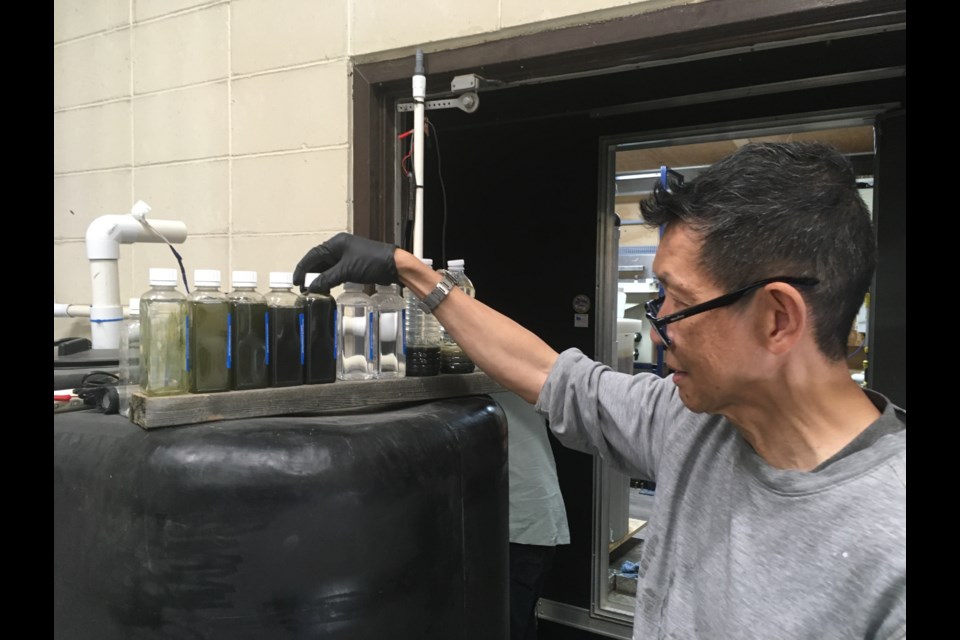SUNDRE – The one-year testing period on a scaled-down version of the new wastewater treatment technology the municipality intends to adopt and implement on a larger scale is winding up and expected to be completed this fall.
The CEO of Soneera Water says construction on the facility, which had initially been anticipated to be finished in 2023 prior to the testing period, will then get underway.
“A pilot test using the full system was originally intended for Sundre,” Darrell Behan wrote in a prepared statement to the Albertan.
“But after consultation with the major stakeholders, the Town of Sundre and Alberta Environment and Parks, we believed the best path forward was a more traditional scaled-down approach,” Behan said.
Among the factors driving the decision was a preferred approach by Alberta Environment and Parks to first prove the technology’s concept prior to proceeding with the full-sized build, he said.
“That process allowed them to comment on and have input into final system design without significant re-engineering,” he explained.
“While not a critical issue, it became apparent that our interest was best served by conforming to this approach. In other words, AE – correctly – wants to ensure design compliance before construction.”
Now 10 months into the 12-month mandatory testing phase, results are so far exceeding required regulatory standards, he said, adding the company expects to receive the green light from the provincial government, after which construction will commence “immediately,” he said.
“Construction should take around six months with the footings already in the ground and the shed being of a modular design is manufactured and sitting at the manufacturers at Craigdhu waiting for the go-ahead,” he said, adding the municipality’s existing wastewater release permit is set to expire later in 2025.
“The new wastewater facility will be commissioned well before that time,” he said.
Although supply chains were severely disrupted by COVID-19 causing demand surges and backlogs in some areas along with increased costs such as stainless steel, Behan told the Albertan in response to follow-up questions during a phone interview that the company had during the pandemic purchased the necessary materials and that the majority of components for the system are already secured.
That has bolstered his confidence that the full-scale facility’s build will from start to finish take no longer than six months.
“Utilizing Soneera’s mobile unit bought us time to assemble the required items without delaying the pilot timeline,” reads part of his written statement.
“While Soneera was and remains willing to meet these additional costs, it simply made commercial sense to approach the project as we are, given our fixed price and guaranteed performance offer to the town and our firm commitment to 'least cost' solutions.”
The goal, he later elaborated during the interview, is to have the shed or exterior of the building completed before the winter so work on the interior can be tackled during the colder months.
Despite the delays and cost overruns, he said the overall cost to the town and province is not changing.
“They’re not on the hook for one cent extra,” he said, confirming the originally projected cost of $11.5 million – of which the provincial government has committed $7.5 million – has not changed.
While highly automated, the system isn’t entirely “a true plug and play technology,” he wrote.
“The pilot demonstration unit allows us to perform a level of experimentation and to configure the unit’s operational settings more rapidly than the full-size system, reacting to differences between our initial assumptions and the reality of actual pollutant levels, water and ambient temperatures and flow rates,” he added.
Behan said during the interview that he also had plans to meet with municipalities in B.C. that have expressed interest in the technology, and had also recently held meetings with delegations from Alberta municipalities including Irricana, Airdrie and Acme.
“We’re getting interest from a lot of towns,” he said.
Meanwhile, the testing phase in Sundre wraps up at the end of September.
The town’s operations department has been keeping a close eye on the results alongside a third-party tester. Since the municipality completed upgrades to its underground infrastructure, the amount of groundwater seeping into the lines has been substantially addressed.
“Since our construction on the highway is completed, our raw influent is less diluted,” said Shane Vollett, with the town’s operations department.
In other words, the influent contains a higher concentration of waste but a lower overall volume coming into the facility. And samples of influent Vollett had recently drawn for testing following the infrastructure work was opaque, but the treated effluent is still coming out next to potable, he said.
The technology itself, which has been successfully deployed in a small Saskatchewan town called Unity and was developed by engineer Gonzales Lee, who is also Soneera Water’s vice-president of technical services, uses a process known as electroflocculation to separate waste material from the water.
Vollett said there is “zero concern about scalability” and that there’s been no hiccups to date with the technology.
Furthermore, he said test results so far have “100 per cent exceeded” expectations.
- RELATED: Sundre wastewater treatment facility suffers 'one hold up after another'
- RELATED: Testing underway on Sundre’s new wastewater treatment tech
- RELATED: Concrete foundation for Sundre’s new wastewater treatment upgrade complete
- RELATED: Construction starting on Sundre's pilot sewage treatment tech
- RELATED: Sundre's new wastewater treatment process proven
- RELATED: Cutting-edge wastewater facility could become trendsetter
- RELATED: New state-of-the-art pilot Sundre facility receives $7.5 million



